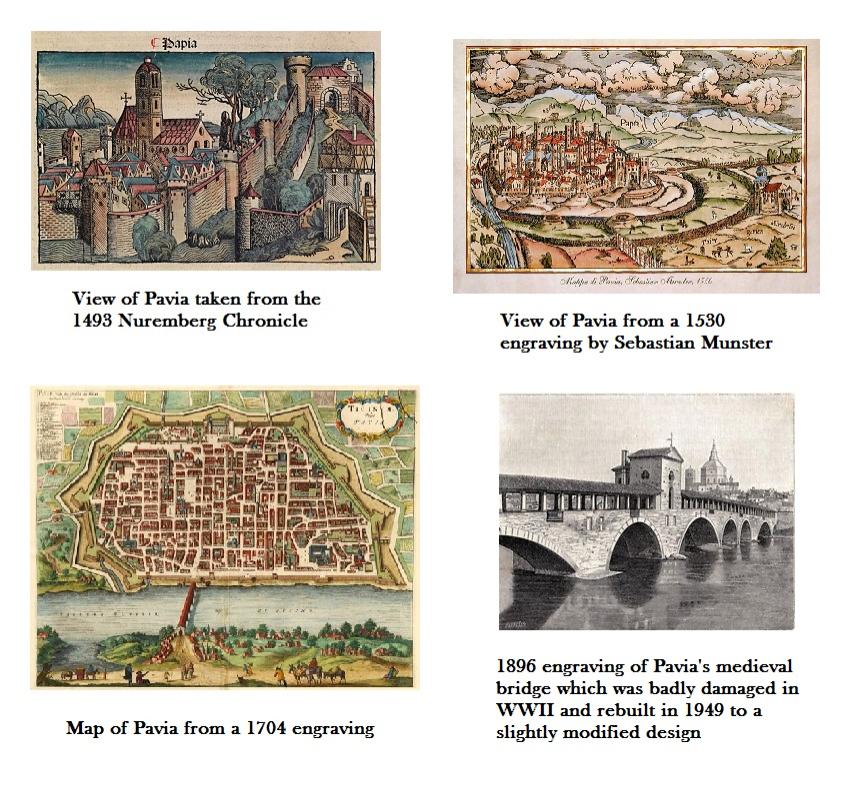THE CITY ON THE TICINO – A BRIEF HISTORY OF PAVIA
Today Pavia, in northern Italy, is overshadowed by its giant neighbour Milan but during its 2,234 years of existence this extraordinary city has witnessed some of European history’s most momentous milestones:
218 BC – during Rome’s epic war with Hannibal, the consul Publius Cornelius Scipio builds a camp to guard a strategic bridge over the Ticino. Over the ensuing centuries, this camp evolves into the garrison town of Ticinum (Pavia).
476 AD – it was at Pavia that Romulus Augustulus, the last Roman Emperor in the West, was deposed by his own troops. The mutineers’ leader, the German mercenary Odoacer, promptly crowns himself King of Italy and declares the Western Empire to be dissolved.
493 AD – at a peace conference, Odoacer is assassinated by Theodoric the Ostrogoth who assumes the crown of Italy and begins construction of a vast palace, amphitheatre and bath complex at Pavia.
523 AD – Theodoric imprisons his advisor, Boethius, in one of Pavia’s churches. Whilst awaiting his execution, on a charge of treason, Boethius writes his seminal work The Consolation of Philosophy.
572 AD – Pavia is captured by the barbarian Lombards who turn the city into the political and religious capital of their kingdom. Under the Lombards, Pavia is endowed with numerous churches, monasteries and convents but this Germanic tribe followed the Arian form of Christianity and their ‘heresy’ brings them into conflict with Catholic pope in Rome.
773 AD – after being encouraged by the pope, Charlemagne King of the Franks invades and crushes the heretic Lombards. Pavia falls after a year-long siege and Charlemagne is crowned with the Iron Crown of Lombardy in the city’s principal church. Fifteen years later, Charlemagne is crowned Holy Roman Emperor in Rome but it’s Pavia that becomes the centre for imperial authority.
c.825 AD – a school for teaching law and theology is founded by Charlemagne’s successor Lothar I.
1004 – the citizens of Pavia rebel against Holy Roman Emperor Henry II but their revolt is brutally suppressed. In spite of this bloodbath, during the centuries’ long struggle between pope and emperor for control of Italy, Pavia generally fights for the imperial party whilst Milan, Pavia’s bitter rival, supports the papacy.
1163 – the anonymous chronicler known simply as the ‘arch-poet’ declares that Pavia is the best place in Italy to have ‘a good time’!
1359 – despite centuries of resistance to outside control, Pavia falls under the rule of the Visconti Lords of Milan but the city thrives. In 1361 the ancient law school is upgraded to a university which soon becomes one of the most important and prestigious seats of learning in Europe.
1525 – the Battle of Pavia, fought between the armies of Francis I King of France and Charles V the Austro-Spanish-Hapsburg Holy Roman Emperor, ends Pavian and Milanese independence. After the catastrophic defeat of the French, both cities remain under the rule of the Spanish Hapsburgs until 1713, after which control passes to the Austrian Hapsburgs. Apart from a brief period of French dominance during the Napoleonic Wars, Pavia was ruled by the Austrians until the Unification of Italy in the 1860s.
